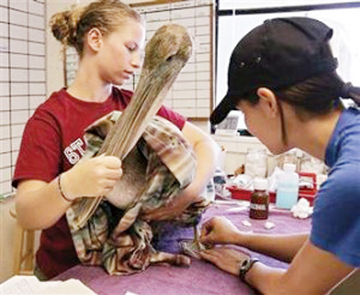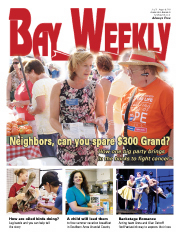This Week’s Creature Feature
How Are the Oiled Birds Doing?
Leg bands help tell the story
by Ron Stein

Since April, 1,212 birds have been rescued from the filth spilling out of the Deep Water Horizon rig in the Gulf oil spill. Another 2,188 birds were found dead. Of the survivors, 511 have been released.
Over one-third of the birds rescued survived the big spill. But how long will they survive?
To answer that question, scientists need help. Maybe even your help — though rescued birds aren’t expected to flock to Chesapeake Country.
Nearing the end of its rehabilitation, each bird is banded with metal leg bands with a unique ID number. Brown pelicans also get a large leg band colored orange, red or pink.
Finally, each bird is tested to see if it can handle the tough conditions nature will bring. Survivors will need to be waterproof, able to feed themselves and free of injuries or disease. Those that pass are trucked to Gulf habitats out of the way of oil and people.
How they survive from then out, nobody knows.
So U.S. Fish and Wildlife Service scientists are asking people in the Gulf region and beyond to report any sightings of these banded birds.
Reports of the band number and the bird’s location help biologists understand the movements and survival of the birds after their release. They’ll be able to learn how far rehabilitated birds travel and whether they return to their original habitat. Reported sightings also add to our general knowledge of birds and their behaviors.
“There isn’t a wealth of information that biologists have on birds,” said Tom Alvarez, public affairs specialist at the U.S. Fish and Wildlife Service. “This will be another piece in the puzzle as far as behaviors and movements of birds.”
Report banded birds to the National Bird Banding Lab: www.pwrc.usgs.gov/bbl/default.htm.
|
![]()


